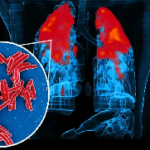A recent report by Goldman Sachs highlighted that India has shown higher employment growth in capital-intensive industries in comparison to labor-intensive sector. This development is in line with the government’s efforts to promote assembly in specific areas, such as electronics, machinery, and pharmaceuticals.
Strong Performance In Exports And Employment
According to the report, capital-intensive subsectors under manufacturing like chemicals and machinery have witnessed major growth both in exports and employment during the last decade. A double-digit growth in exports and developed markets was witnessed, thus building India’s growth towards a strong export base for high-value products.
Labor-Intensive Sectors Have Higher Share Of Jobs
The report revealed that despite the impressive growth in capital-intensive industries, labor-intensive sectors have a higher share of jobs in the country.
According to Goldman Sachs, 67% of manufacturing jobs are there in labor-intensive sectors such as food processing, textiles, and furniture. As per the Annual Survey of Industries (ASI) data, 17 million workers, or 28% of total manufacturing employment were employed in the organized manufacturing sector as of Fiscal Year 22.
It was observed that the Indian government’s Production-Linked Incentive (PLI) schemes have mostly targeted the capital-intensive industries to drive growth. Food products, textiles, and other labor-intensive sectors account for 11% and 10% of employment respectively, reports added.
Construction Sector As A Major Employment Generator
Meanwhile, the construction sector is one of the major employers accounting for around 13% of employees. As per the reports, this sector was responsible for the creation of 40% of the incremental non-agriculture jobs in the previous construction cycle between 2004-2008, given the high capital investment in real estate and infrastructure.
Business services and retail trade account for 34% of total employment. Yet, in FY23, this share remained below the sector’s 54 % contribution to gross value added (GVA). Service-sector jobs, concentrated in retail and wholesale trade with additional Growth in business and transportation services, account for 15% and 12% of service jobs, respectively.
Technological Advances & E-Commerce Transforming Retail Industry
Technology advancements and e-commerce expansion have transformed the retail industry. About 41% of offline traders are creating new jobs by shifting their business online, thus demanding digital skills, logistics, and warehouse roles across the country.
Impact Of IT Industry On Employment
The IT industry has also made a very crucial contribution to India’s employment landscape within business services. According to NASSCOM, the country’s IT sector had revenues amounting to USD 245 billion as of FY23 and accounted for almost 7% of India’s nominal GDP. For the past eight years, the sector created almost 1.9 million jobs, thus boosting the workforce, to 5.4 million.



